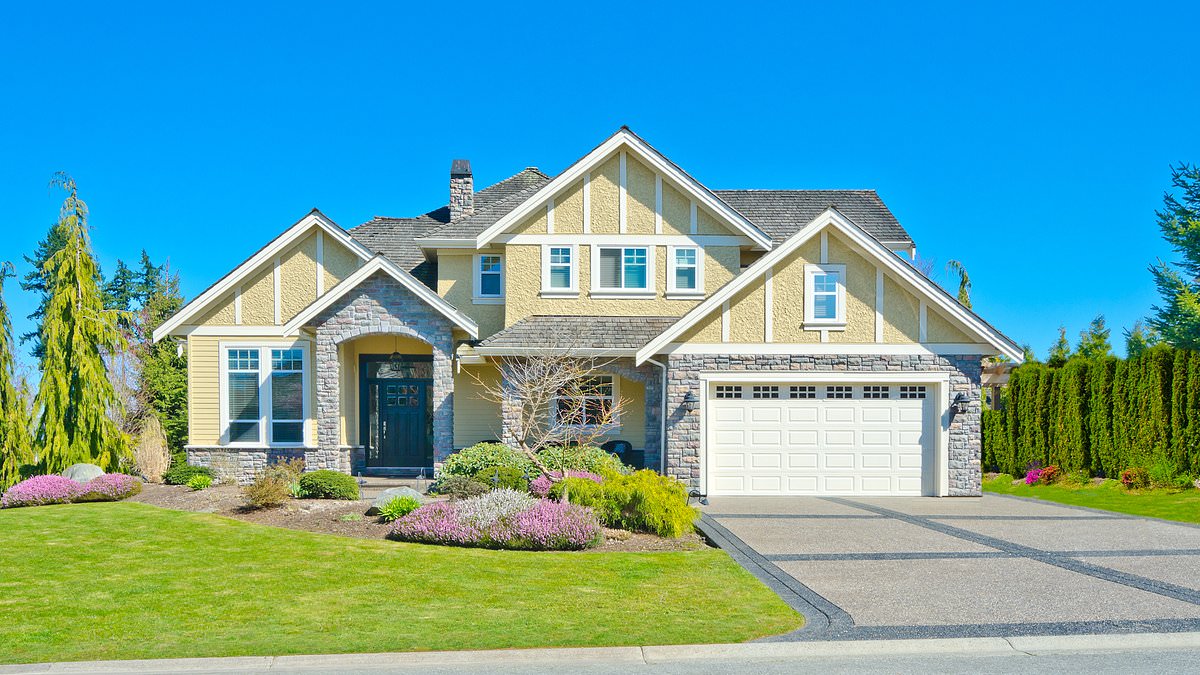The median age of second-time homebuyers in the US has skyrocketed in the last 40 years, while the median age for first-time buyers has also climbed by a more modest five years.
The typical age at which Americans are buying their first home has risen since 1980, going from about 30 years old to 35 years old today. Experts cite high housing costs, record-high mortgage rates, a desire to start a family later and a limited supply of family homes for the rise in age.
In 2023, the 30-year mortgage rate peaked at 7.8 percent, compared to a decade ago when it was just under four percent.
Those factors are pushing home ownership out of reach for younger Americans. And recent data shows that Baby Boomers are buying homes at higher rates than millennials.
The repeat home buyers who are now, on average, much older than they used to be are buying later for several reasons. In 1980, a repeat homebuyer was typically 36 years old. Today, that median age sits at a staggering 58 years old.


Because millennials are buying homes later, the residents they purchase are often larger family homes, not the ‘starter homes’ of the past – so the need to upgrade to the second home after a few years is mitigated
Because millennials are buying homes later, the homes they purchase are often larger family homes, not the ‘starter homes’ of the past – so the need to upgrade to the second home after a few years is mitigated.
Some millennials cited the exorbitant cost of buying in cities as the reason they’ve held off until now.
But the pandemic, which drove so many from highly populated cosmopolitan areas with confined living spaces, forced some to consider the option of buying elsewhere.
A year into the pandemic, some millennial couples and a few singles made the decision to continue renting their city pads, but plant financial roots in more remote areas, where housing prices are more reasonable and space is more ample.
They hope their investments will pay off. Some are likely already seeing their decisions as a win due alone to the massive rise in the interest rate since 2021.
But there are other reasons millennials aren’t buying in especially high numbers. Boomers are also refusing to sell their homes at a rate high enough to allow Gen Xers and Millennials to move into their ‘second homes.’
Baby boomers whose kids are now adults and have left the home, own about 28 percent of large homes in the US and are refusing to downsize, according to a Redfin analysis.
Millennials with kids own just over 14 percent of homes in the same category, and Gen Zers with children own less than 1 percent of the large home supply. A large home is described as having at least three bedrooms and many families used to consider that a second-home purchase or a longer-term home after a starter residence.


The Baby Boomer generation, most of whom are now empty nesters, own close to one-third of all the large homes in the US, and they aren’t selling
According to the data, most boomers – who were born between 1946-1964 – who own their homes have no mortgage.
For that group, the median monthly cost of owning a home is $612.
For those who still have a mortgage (46 percent), close to all of them are locked in at a much lower interest rate than they would have if they sold their family homes and bought smaller ones.
Even if they downsized, they could end up with a nearly identical monthly payment, so the financial incentive to sell is essentially non-existent.
The boomers hanging on to their sprawling suburban homes means the supply of larger houses has dwindled for millennials.
The high-mortgage rates has also stalled the homebuilding market and the downturned economy has made it harder than ever before to afford to buy a home – let alone a large family one.
Boomers experienced the opposite effect in the 1990s, when the economy was booming and they were in their prime earning years.
An abundance of affordable, newly built homes became available to boomers with flourishing bank accounts.
Those homes wound up being fabulous investments as home values have grown at four times the rate of incomes since the nineties.
At present, boomers own half the wealth in the US.

Millennials with kids own just over 14 percent of homes in the same category, and Gen Zers with children own less than 1 percent of the large home supply

First time buyers are being encouraged to look into newly constructed homes, which are generally large and are available in larger quantities following the pandemic
Redfin’s senior economist Sheharyar Bokhari explained why boomers don’t have much motivation to sell in the current environment.
‘The problem for younger families who wish their parents’ generation would list their big homes: Boomers don’t have much motivation to sell, financially or otherwise.’
‘They typically have low housing costs, and the bulk of boomers are only in their 60s, still young enough that they can take care of themselves and their home without help,’ he continued.
‘Still, some boomers are ready to downsize into a condo or move somewhere new for retirement, and the mortgage-rate lock-in effect is starting to ease – so even though there won’t be a flood of inventory, there will be a trickle.’
Bokhari added that young, first-time homebuyers should consider new construction if they are looking for relatively large homes.
Few newly constructed houses are built with fewer than three bedrooms and builders are attempting to sell the ones they began building right at the start of the pandemic.
